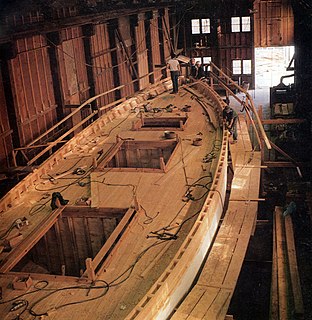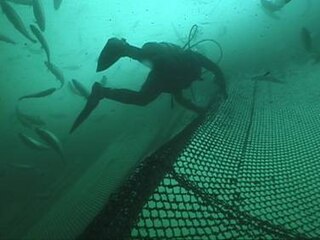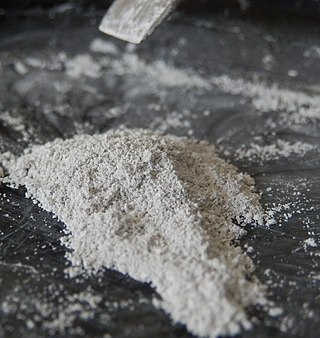Pettit Marine Paint is a manufacturer of marine (boat) coatings, antifouling boat bottom paint, varnish and epoxies for consumer and commercial markets. The company was established in 1861, its headquarters are located in Rockaway, New Jersey.
Pettit Marine Paint is a manufacturer of marine (boat) coatings, antifouling boat bottom paint, varnish and epoxies for consumer and commercial markets. The company was established in 1861, its headquarters are located in Rockaway, New Jersey.
In 1861, the Gardiner McInnes Company in Salem, Massachusetts was developing the “Old Salem” anti-fouling paint line. This product was manufactured as a plastic lump that had to be heated, melted and mixed. “Old Salem” was used primarily by the United States Navy, but the demand eventually diminished and the McInnes Company switched gears, developing an architectural line of “Old Salem” paints. During World War II they would revert to the marine industry, developing McInnes Green, an antifouling paint that was used in large quantities on US Government contracts. [1]
During these years for the Gardiner McInnes Company, another paint company was emerging onto the scene. A chemist John L Pettit decided to branch away from the company and begin his own line of paints. In 1923 John L Pettit established the Pettit Paint Company, based in Jersey City, New Jersey. [2]
Not long after establishing their company, the Pettit Paint Company purchased the McInnes Company along with their established brands, including the “Old Salem” line. This purchase would expand the products Pettit offered as well as their customer base. As the Pettit Paint Company gained popularity, they relocated to a larger, more accommodating plant in Belleville, New Jersey. After four expansions, the Pettit Paint Company and their offices were moved to Rockaway, New Jersey in 1972. [3]
In California the Z-Spar line was coming to life. Andrew Brown had been involved in a joint venture with his brother, specializing in automotive and home paint. With operations out of both California and Argentina, the pair discovered that working as a joint union was too difficult. After breaking away from the business with his brother, Brown was ready to tackle a new market on his own. In 1948, Brown introduced a line of marine paint known as Z-Spar. After a successful run with the product, Z-Spar was sold to a company called Koppers. Shortly after Z-Spar joined Koppers, they would purchase the Woolsey line, merging the two companies under one name. Pettit Marine Paint was established in 1972, after the unification of three lines of marine paint manufactures – Pettit, Woolsey, and Z-Spar. [4]
Throughout the years, the Pettit line would continue to grow in the pleasure boat market. From the early 1980s through 1990 the companies were bought and sold various times until the three lines were all under the ownership of Koppers. The products were expanded and improved. Today, the Pettit lines, along with the Woolsey and Z-Spar have been combined under the name, Pettit Marine Paint and continue to operate out of the Rockaway, New Jersey plant. [5]
Hard Modified Epoxies - The active ingredient leaches out while the paint film stays mostly intact. Leaching Coppers lose performance as time goes by and must be repainted after dry storage. Traditional Leaching Paints do not require movement and work equally well at the dock and underway. These products should be sanded well prior to re-coating to prevent build-up.
Ablatives - (Ultima and Hydrocoat Technology) Ablative polymers paints wear away with use exposing new biocides, both the biocides and the paint film disappear over time. Ablative Polymers can be used multi‐season and maintain a more steady performance throughout their useful life. Ablative Polymers require movement of the boat in order to work. Works similar to a bar of soap. Polishes and wears away with use.
Hybrid - (Vivid Technology) Hybrid antifoulings offering a hard paint that does not build up. Hybrid's work by leaching out the biocides just as a Traditional Leaching Copper does, but once the biocides are gone, the paint film will break down exposing a new layer of biocide. Hybrid paint films resist build ‐up but can be burnished, trailered, dry-stored, and taken in and out of the water without loss of protection. [6]
Copper Free - Econea is a non-metal biocide which is extremely effective against hard-shelled fouling organisms including barnacles, hydroids, mussels, oysters and tube worms. Econea should always be combined with a secondary biocide to prevent soft growth and enhance its antifouling capabilities. [7]
White Copper -(Cuprous Thiocyanate)- requires 50% less copper content than the heavy, dark copper used in conventional antifouling paints. They are the only copper-based paints that are compatible with aluminum. [8]
Low Density Copper - replaces the core of traditional Cuprous Oxide with environmentally friendly materials found naturally in the ocean. The result is a copper biocide that provides the performance of a conventional cuprous oxide antifoulant while reducing the amount of copper introduced into the environment.
Irgarol - is used in many dual biocide products, Irgarol is an algicide designed for use in antifouling paints to prevent soft growth such as algae and grasses. [9]
Water Based (Hydrocoat Technology)- This formula uses water to replace the harsh solvents found in conventional antifouling paints. The product has an extremely low VOC content. The unique low‐odor formula allows unlimited dry time to launch, and allows painting indoors.
Clean Core Technology - An enhanced paint film that contains fewer heavy metals, and allows a more consistent release of biocides. By removing the heavy metals in the paint film, and replacing them with more environmentally friendly additives, Clean Core Technology can reduce the amount of heavy metals released into our waters by up to 90%. These new additives have been specially formulated to provide a more “finetuned” and consistent release of the biocides from the paint film. This results in a more effective bottom paint that requires lower biocide levels to deliver full antifouling protection.

Paint is any pigmented liquid, liquefiable, or solid mastic composition that, after application to a substrate in a thin layer, converts to a solid film. It is most commonly used to protect, color, or provide texture to objects. Paint can be made or purchased in many colors—and in many different types, such as watercolor or synthetic. Paint is typically stored, sold, and applied as a liquid, but most types dry into a solid. Most paints are either oil-based or water-based and each have distinct characteristics. For one, it is illegal in most municipalities to discard oil based paint down household drains or sewers. Solvents for clean up are also different for water based paint than they are for oil based paint. Water-based paints and oil-based paints will cure differently based on the outside ambient temperature of the object being painted Usually the object being painted must be over 10 °C (50 °F), although some manufacturers of external paints/primers claim they can be applied when temperatures are as low as 2 °C (35 °F).

Varnish is a clear transparent hard protective finish or film. It is neither a paint nor stain. In its native state it has little or no color, but may be pigmented as desired, and is sold commercially in various shades.
A biocide is defined in the European legislation as a chemical substance or microorganism intended to destroy, deter, render harmless, or exert a controlling effect on any harmful organism. The US Environmental Protection Agency (EPA) uses a slightly different definition for biocides as "a diverse group of poisonous substances including preservatives, insecticides, disinfectants, and pesticides used for the control of organisms that are harmful to human or animal health or that cause damage to natural or manufactured products". When compared, the two definitions roughly imply the same, although the US EPA definition includes plant protection products and some veterinary medicines.

Methylisothiazolinone, MIT, or MI,, is a powerful synthetic biocide and preservative within the group of isothiazolinones, which is used in numerous personal care products and a wide range of industrial applications.

All measures that are taken to ensure a long life of wood fall under the definition wood preservation.

Boat building is the design and construction of boats and their systems. This includes at a minimum a hull, with propulsion, mechanical, navigation, safety and other systems as a craft requires.

Ablation is removal or destruction of material from an object by vaporization, chipping, or other erosive processes. Examples of ablative materials are described below, and include spacecraft material for ascent and atmospheric reentry, ice and snow in glaciology, biological tissues in medicine and passive fire protection materials.

Anti-fouling paint - a category of commercially available underwater hull paints - is a specialized category of coatings applied as the outer (outboard) layer to the hull of a ship or boat, to slow the growth and/or facilitate detachment of subaquatic organisms that attach to the hull and can affect a vessel's performance and durability. Anti-fouling paints are often applied as one component of multi-layer coating systems which may have other functions in addition to their antifouling properties, such as acting as a barrier against corrosion on metal hulls that will degrade and weaken the metal, or improving the flow of water past the hull of a fishing vessel or high-performance racing yachts.

Biofouling or biological fouling is the accumulation of microorganisms, plants, algae, or small animals on wetted surfaces that have a mechanical function, causing structural or other functional deficiencies. Such accumulation is referred to as epibiosis when the host surface is another organism and the relationship is not parasitic.

Tributyltin (TBT) is an umbrella term for a class of organotin compounds which contain the (C4H9)3Sn group, with a prominent example being tributyltin oxide. For 40 years TBT was used as a biocide in anti-fouling paint, commonly known as bottom paint, applied to the hulls of ocean going vessels. Bottom paint improves ship performance and durability as it reduces the rate of biofouling (the growth of organisms on the ship's hull). The TBT slowly leaches out into the marine environment where it is highly toxic toward nontarget organisms. TBT is also an obesogen. After it led to collapse of local populations of organisms, TBT was banned.

The environmental impact of paint can vary depending on the type of paint used and mitigation measures. Traditional painting materials and processes can have harmful effects on the environment, including those from the use of lead and other additives. Measures can be taken to reduce environmental impact, including accurately estimating paint quantities so waste is minimized, and use of environmentally preferred paints, coating, painting accessories, and techniques.
Hornblower Cruises & Events is a San Francisco-based charter yacht, dining cruise and ferry service company.

Copper alloys are important netting materials in aquaculture. Various other materials including nylon, polyester, polypropylene, polyethylene, plastic-coated welded wire, rubber, patented twine products, and galvanized steel are also used for netting in aquaculture fish enclosures around the world. All of these materials are selected for a variety of reasons, including design feasibility, material strength, cost, and corrosion resistance.

Kansai Nerolac Paints Limited is the largest industrial paint and third largest decorative paint company of India based in Mumbai. It is a subsidiary of Kansai Paint of Japan. As of 2015, it has the third largest market share with 15.4% in the Indian paint industry. It is engaged in the industrial, automotive and powder coating business. It develops and supplies paint systems used on the finishing lines of electrical components, cycle, material handling equipment, bus bodies, containers and furniture industries.
Biomimetic antifouling coatings are special coatings that prevent the accumulation of marine organisms on a surface. Typical antifouling coatings are not biomimetic but are based on synthetic chemical compounds that can have deleterious effects on the environment. Prime examples are tributyltin compounds, which are components in paints to prevent biofouling of ship hulls. Although highly effective at combatting the accumulation of barnacles and other problematic organisms, organotin-containing paints are damaging to many organisms and have been shown to interrupt marine food chains.
An antimicrobial surface contains an antimicrobial agent that inhibits the ability of microorganisms to grow on the surface of a material. Such surfaces are becoming more widely investigated for possible use in various settings including clinics, industry, and even the home. The most common and most important use of antimicrobial coatings has been in the healthcare setting for sterilization of medical devices to prevent hospital associated infections, which have accounted for almost 100,000 deaths in the United States. In addition to medical devices, linens and clothing can provide a suitable environment for many bacteria, fungi, and viruses to grow when in contact with the human body which allows for the transmission of infectious disease.
Ultra-low fouling is a rating of a surface's ability to shed potential contamination. Surfaces are prone to contamination, which is a phenomenon known as fouling. Unwanted adsorbates caused by fouling change the properties of a surface, which is often counter-productive to the function of that surface. Consequently, a necessity for anti-fouling surfaces has arisen in many fields: blocked pipes inhibit factory productivity, biofouling increases fuel consumption on ships, medical devices must be kept sanitary, etc. Although chemical fouling inhibitors, metallic coatings, and cleaning processes can be used to reduce fouling, non-toxic surfaces with anti-fouling properties are ideal for fouling prevention. To be considered effective, an ultra-low fouling surface must be able to repel and withstand the accumulation of detrimental aggregates down to less than 5 ng/cm2. A recent surge of research has been conducted to create these surfaces in order to benefit the biological, nautical, mechanical, and medical fields.
Ultrasonic antifouling is a technology that helps reduce fouling on underwater structures, through using small-scale acoustic cavitation to destroy, denature and discourage attachment of algae and other single-celled organisms.

Copper(I) thiocyanate is a coordination polymer with formula CuSCN. It is an air-stable, white solid used as a precursor for the preparation of other thiocyanate salts.
In-water cleaning or in-water surface cleaning is methods of removing unwanted material in-situ from the underwater surface of a structure. This often refers to removing marine fouling growth from ship hulls, but also has applications on civil engineering structures, pipeline intakes and similar components which are impossible or inconvenient to remove from the water for maintenance. It does not generally refer to cleaning the inside of underwater or other pipelines, a process known as pigging. Many applications require the intervention of a diver, either to provide the power, or to direct a powered tool.
|journal= (help)